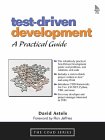Earlier this year (2004), I wrote an article called Change Imperative.
In that article I discussed how I set about changing my e-mail client and my NNTP newreader tool. It’s not important, but I chose TheBat and XanaNews.
Anyway, since I wrote the article, I’ve pretty much given up reading NNTP newsgroups. Why? Well, I’m getting a similar, but higher quality, more focused “fix” of information from the blogs that I’m subscribed to.
I think that’s the key: “subscribed to” and “focused”. I choose which blogs to subscribe to because their authors offers me a more focused view. Previously, using NNTP I had to filter through a lot of dross in order to locate good content. Indeed, a lot of NNTP groups have their resident “bozos”. Luckily, XanaNews has a “bozo bin” – which is just great for filtering out dross.
Of course, the blogs that I subscribe to are telling me when they’ve been updated (either via an RSS or ATOM feed).
Under the hood, we’re all merrily blogging away, carefully classifying each post using categories. This is very similar to the NNTP grouping hierarchy – folks can choose to subscribe to blogs that offer them, say, Test-Driven Development content. Except, blog content tends to be of higher quality, it’s more focused and bozos are just ignored. Ultimately, I have less to read because of the focused content – in reality I subscribe to just over 100 RSS feeds, so the time-saving balances out.
Does this mean the end of NNTP? Given that I pretty much stopped using NNTP over a period of three months (having been a user for longer than I care to remember), perhaps NNTP has a limited lifespan? I know that I can’t be alone.
Roll on the Semantic Web – the profusion of information sources makes the delivery of a real information aggregator even more essential. I’ve downloaded Haystack . I have soft spot for this kind of tool, perhaps because there’s an XML element (no pun intended) relating to how such a tool might work: XML Topic Maps. I’ll blog about Haystack later.
Now, I do have one concern: we’ve all got RSS aggregators, right? And they periodically go off and update themselves, pulling new RSS content from all our subscriptions. Isn’t all this extra traffic going to slow things down? Suddenly, sites that enjoyed average traffic are suddenly having to serve up MBs worth of RSS content to thousands of subscribers. Bandwidth is going to go through the roof. I’m off to check my stats: I’ll blog about my findings later.


